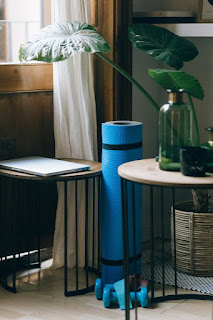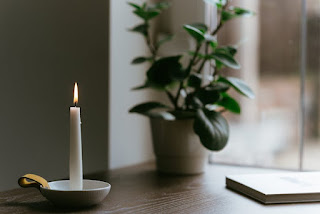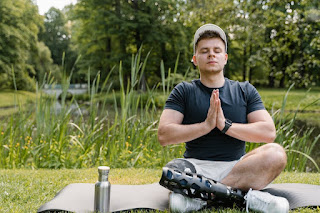Transforming Stress into Serenity: Meditation Tips for Busy Lives
In today’s fast-paced world, stress has become a commonplace companion, shadowing our daily routines and affecting everyone from working moms to high-powered executives. As we juggle multiple responsibilities and navigate the complexities of modern life, finding time to breathe—let alone meditate—might seem like a luxury we can’t afford. However, the transformative power of meditation offers not just a respite but a potent tool for managing stress and enhancing overall well-being.

Meditation isn’t just for those who can carve out hours of serene solitude; it’s also for the busy single parent, the overwhelmed student, and the stressed-out employee. This practice has evolved from ancient traditions into a modern-day sanity saver, adaptable to any lifestyle and schedule. Engaging in meditation can reduce stress, increase focus, and promote a healthier life, empowering both men and women to handle daily pressures with grace and ease.
By integrating simple meditation tips and techniques into our routines, we can transform overwhelming stress into a profound sense of serenity. Whether it’s a quick breathing exercise or a brief moment of guided visualization, the right approach can make meditation an accessible part of your daily life, paving the way for lasting lifestyle changes.

Quick Meditation Practices for Busy Schedules
In the relentless rush of daily life, it can seem nearly impossible to find a moment for meditation. Yet, it’s these very moments of busyness that can benefit the most from meditation’s calming effects. Fortunately, meditation doesn’t require long periods of time; even a few minutes can be incredibly effective. Here are some practical tips and quick practices that can help you incorporate meditation into even the busiest of schedules:
- Minute Meditations:
- Find one minute twice a day (perhaps morning and evening) to close your eyes and focus solely on your breathing. This brief pause can significantly decrease stress and increase clarity.
- Guided Audio Meditations:
- Utilize guided meditations from apps or online platforms during your commute or as a short break during your workday. These can range from 5 to 10 minutes and are specifically designed to fit into tight schedules.
- Mindful Moments:
- Turn routine activities into meditation by practicing mindfulness. Whether you’re brushing your teeth, showering, or eating, focus fully on the sensations and experiences of the activity without letting your mind wander to your to-do list.
- Breath Focus Technique:
- Whenever you feel overwhelmed, pause and take ten deep breaths. Concentrate on each breath as it moves in and out of your body, which can help reset your stress levels and clear your mind.
- Visual Reminders:
- Set reminders on your phone or computer to take short meditation breaks. These reminders can serve as prompts to take a few conscious breaths or to stretch and relax your muscles.
By integrating these short meditation practices into your daily routine, you can begin to reduce stress without rearranging your entire schedule. Each small step not only contributes to immediate relief but also cultivates the habit of mindfulness, which can lead to significant changes in your overall quality of life.

Breathing Techniques for Instant Stress Relief
Breathing is an involuntary action we often take for granted, yet it holds immense power in regulating our mental and physical states. By harnessing this power through specific techniques, we can achieve immediate stress relief and contribute to long-term health benefits. Here are several breathing techniques that anyone can use to quickly alleviate stress:
- Diaphragmatic Breathing:
- Sit comfortably or lie down. Place one hand on your chest and the other on your belly. Breathe in deeply through your nose, ensuring your diaphragm inflates enough to stretch the lungs. The hand on your belly should rise higher than the one on your chest. Exhale slowly through pursed lips. This technique is particularly effective for reducing anxiety and improving focus.
- 4-7-8 Breathing:
- Also known as the “relaxing breath,” this method involves breathing in for 4 seconds, holding the breath for 7 seconds, and exhaling for 8 seconds. This pattern helps decrease anxiety, aids in sleep, and can be a quick way to de-stress before a meeting or stressful event.
- Alternate Nostril Breathing:
- Sit in a comfortable position with your back straight. Close the right nostril with your thumb and inhale slowly through the left nostril. Close the left nostril with your fingers, then exhale through the right nostril. Inhale through the right nostril, then close it, and exhale through the left. This cycle can help calm the mind and balance the left and right hemispheres of the brain.
- Progressive Relaxation Breath:
- Focus on tensing each muscle group as you take a deep breath in, then relax them as you breathe out. Work your way through the body from your feet to your head. This method helps reduce physical tension and mental stress simultaneously.
- Mindful Breathing:
- Simply observe your natural breathing pattern without trying to change it. Notice the sensation of air entering your nostrils, filling your lungs, and then leaving your body. This practice of awareness brings you back to the present moment and can significantly reduce stress levels.
Incorporating these breathing techniques into your daily routine, even for a few minutes, can provide a quick and effective way to manage stress, enhance relaxation, and promote a sense of well-being. They are practical tools not just for crisis moments, but also for cultivating a resilient and calm state of mind over time.

Public Meditation: Finding Tranquility in Chaos
Meditating in public may seem daunting at first, but with the right techniques, it can become a seamless part of your daily routine, providing a much-needed oasis of calm amidst the hustle and bustle of daily life. Here are tips for incorporating meditation into your public routines, whether you’re at the office, in a park, or even on public transportation:
- Use Noise-Canceling Headphones:
- Block out distracting noises with noise-canceling headphones. Play soft, ambient sounds or a guided meditation to help focus your mind and create a personal space of tranquility.
- Find a Quiet Corner:
- Look for less frequented areas during your breaks, like a quiet corner of a park, an unused meeting room, or even your car. These spots can become your go-to places for a quick meditation session.
- Practice Seated Meditation on Commutes:
- If you commute via public transportation, use the time to close your eyes and practice breath-focused meditation or mindful observation. This can turn travel time into a productive retreat.
- Use Visualization Techniques:
- When a quiet spot is hard to come by, close your eyes and visualize a peaceful scene—a beach, a forest, or your own imaginary sanctuary. Visualization not only helps in reducing stress but also enhances your ability to focus amidst distractions.
- Incorporate Mindful Walking:
- Turn walks into meditative practices by focusing on the sensation of your feet touching the ground, the rhythm of your breath, and the sounds around you. Mindful walking is an excellent way to meditate without needing to sit still.
- Short and Sweet Sessions:
- Even five minutes of meditation can be beneficial, so don’t worry about fitting in a long session. A few minutes of deep breathing or mindful observation can reset your stress levels and improve your mood significantly.
Meditating in public places might take some getting used to, but with practice, it can become a powerful tool for maintaining mental balance and resilience. By learning to find peace in any environment, you empower yourself to handle life’s stresses with greater calm and presence.

Committing to a Change for a Serene Life
As we’ve explored, integrating meditation into our hectic lives doesn’t require monumental changes, just small, consistent steps. Each breath taken in mindfulness, each minute spent in quiet reflection, builds a stronger foundation for managing stress and enhancing overall well-being. For the busy professional, the overwhelmed parent, or anyone in between, the journey toward serenity begins with a single, mindful moment.
The beauty of meditation lies in its simplicity and accessibility. Whether it’s a minute-long breathing exercise or a quick walk filled with mindful awareness, these practices can be seamlessly woven into the fabric of our daily lives. Over time, these moments accumulate, leading to profound transformations not only in how we manage stress but in how we view and interact with the world.
We encourage you to start small, remain consistent, and be patient with yourself as you embark on this path. Meditation is not about achieving perfection but about fostering a deeper connection with yourself and your surroundings. By embracing meditation, you embrace a life of greater peace, balance, and fulfillment. Let today be the day you take that first step toward transforming stress into serenity.





